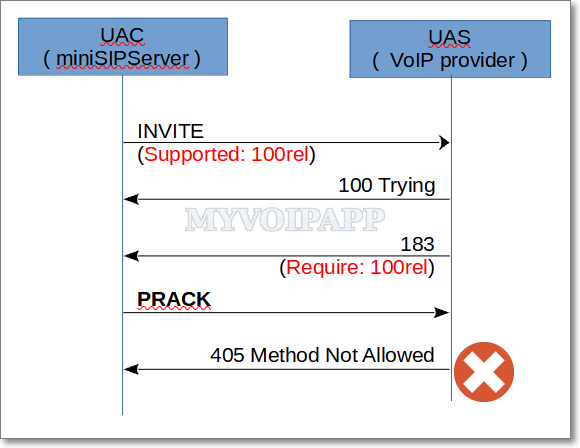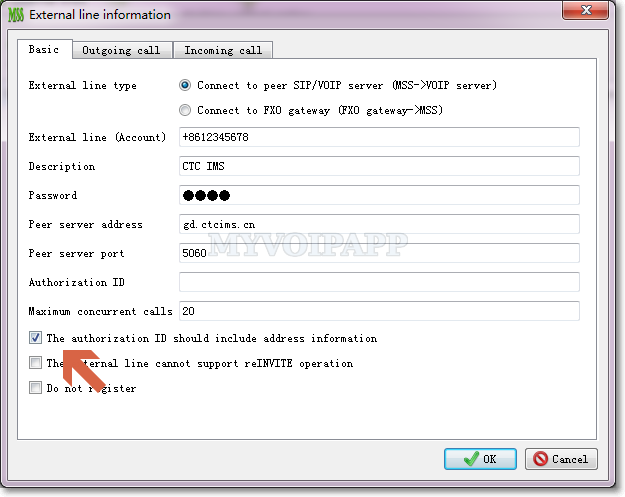Additional parameter of Request-URI
By default SIP network always uses SIP URI to carry information, such as From, To, and so on. For example:
sip:+8613901088888@ims.bj.chinamobile.com
But for traditional telecommunication networks, they always use E.164 telephone numbers which are different with SIP URI. So ETSI (or 3GPP) defines a new URI, that is TEL URL. For example:
tel:+8613901088888
So when working with IMS networks, there could have two URI formats, SIP URI and TEL URI. miniSIPServer can support both formats, it can process TEL URI of incoming calls automatically, but all outgoing calls always use SIP URI formats.
It could be a problem. Fortunately IMS networks consider it very carefully. For example, China Mobile can accept TEL URI and SIP URI with special parameter ‘user=phone‘ which is described below.
sip:+8613901088888@ims.bj.chinamobile.com;user=phone
If we configure external lines of miniSIPServer to work with China Mobile networks, it can be no problem because miniSIPServer will automatically add ‘user=phone’ to Request-URI. But in some markets, China Mobile requires to establish SIP trunk connections, then it could be a problem. miniSIPServer will not add ‘user=phone’ in Request-URI since we think it is a ‘server to server’ scenario.
To fix that, we add a ‘additional parameter of Request-URI’ parameter in SIP trunk outgoing call configuration. Please refer to the figure below.





